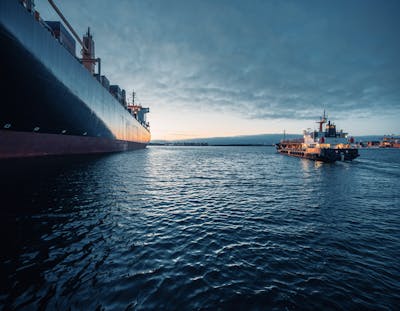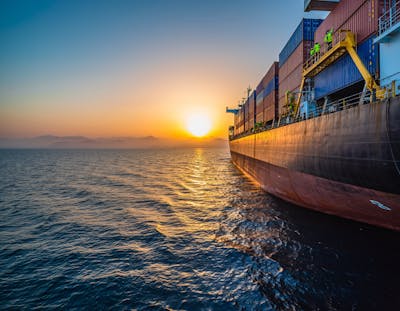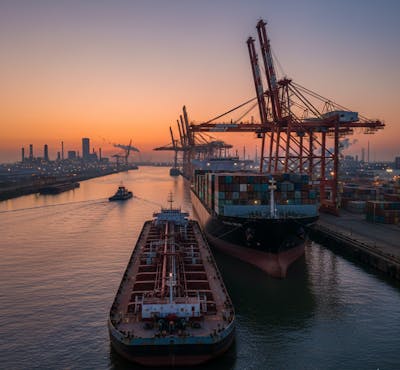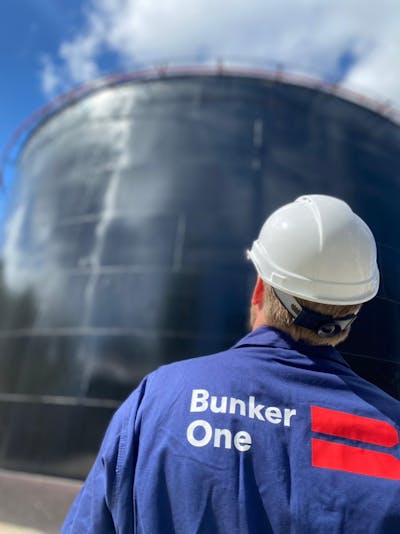Sediment Stability and Compatibility of Future 2020 Fuels
To elaborate on fuel oil stability & compatibility it is relevant to define what is “stability” and “compatibility”, respectively. Both terms are often used as one and the same.
Stability is the capability of a fuel to keep asphaltenes in suspension. If a fuel oil is fully stable it will not precipitate sediments of asphaltene.
Compatibility is the capability of two fuels to blend into a stabile product.
With the introduction of 0.1% sulphur limits in ECAs in 2015 several fuel oils, with Vacuum Gas Oil or VGO as the main component, were introduced to the market. The fuels were very paraffinic and with no or extremely low concentrations of asphaltenes. Per definition it makes no sense to talk about stability in those products as there are no asphaltenes to precipitate.
By blending the very paraffinic oil with residual fuels with cracked asphaltenes, the asphaltenes will agglomerate and precipitate in tanks, separators and filters creating huge problems, why many owners refrain from purchasing those fuels.
The fear is that 2020 0.5% S fuels will be highly paraffinic products supplied from some suppliers and more naphthenic asphaltene containing from others and that there will be a low compatibility between those fuels.
In cooperation with one of the biggest and most recognised Marine Fuel Test Providers, Bunker One performed several blend tests based on known and available fuels and available blend stocks in Northern Europe.
#1 Light Cycle Oil (LCO). #2 Marine diesel. #3 Cracked residue. #4 Vacuum gas oil.
From those we made three 2020-compliant blends with a sulphur content of 0.5%.
I. #1 & 3 turned out to be very stable, TSA 0.01 Dry spot test 1 (stable)
II. #2 & 3 border line result, TSA 0.10 Dry spot test 2 (border line)
III. #3 & 4 unstable with TSA of 0.18 Dry spot test 3 (unstable)
Then we tried to blend them further with 6 already available ECA fuels; which we found to be problematic fuels.
We chose a kind of worst-case scenario, simulating a half empty tank to be filled to full. Then we blended 50/50 between our own blends and with 6 ECA-compliant fuels.
The #I product blended very finely with all other products with exception of one border line. The #II product blended with the outcome of three unstable and 4 stable ones. And finally, the #III product blended exactly as the #II product with the same 3 unstable and 4 stable ones with TSA 0.01% or less.
Looking deeper into those non-scientific tests gave confidence to the theories we assumed. The most aromatic blend #I turned out to be a very compatible product. But that the borderline #II and the unstable product #III managed to blend into 4 very stable products out of 7 was a positive surprise.
Not surprisingly we found that the very paraffinic products would not blend with the cracked products and from our still non-scientific tests we define paraffinic products as low-density products, very low on micro carbon residue and absence of cat fines.
Marked with green the special characteristics of the oils blending to unstable products.
We introduced the test Toluene Equivalent Test (TE), which is a relatively inexpensive and simple test, however not a part of ISO8217. It is an expression of the stability reserves of an oil. The result is expressed in a percentage from 0 to 100 and the lower the number, the better the stability reserves.
The tipping point whether it is a compatible product or not seems to be about 50% with few exceptions; however, these exceptions turned out to be more stable than expected. We define a stable product as one with TSA complying with ISO 8217 =/< 0.1%.
With the characteristics we have from an ISO 8217 test, the cleanliness/stability spot test and the Toluene Equivalent Test we can develop simple algorithms that give a very good hint of compatibility or not. And by experience; when we judge incorrectly, the results are more stable than expected.
Conclusions
The investigations we have made so far give a relatively good confidence on the stability problems we will see with the future fuels. The present pricing of feeds to the 0.5% volumes gives advantages to the more naphthenic and aromatic blends and if the spread widens more between distillates and residues this will be enlarged. Thus, the majority of 2020 fuels will look much like the 1% fuels we knew from ECAs 2012 – 2015. Just lower on viscosity and density and not least also lower on asphaltenes (MCR) and unfortunately the same or even elevated number of cat fines.
Lower density and lower viscosity will increase the efficiency of the separators; therefore, we should not necessarily fear elevated cat fines as long as they are within the existing ISO limits.
Also, we will see straight run fuels deriving from sweet heavy crudes, like the Doba, Dar, Cabina crudes and others. Hardly produced by the oil majors, but by trading houses and “stand alone” units producing fuel directly to the shipping industry. When the fuel blenders get more familiar with the fuels, they might be blended, or “ISO 8217 adjusted” with slurry, which will make them cheaper, but unfortunately also introduce cat fines.
There might still be room pricewise to produce the very paraffinic fuels for use in the ECAs as we know already today.
From an ISO 8217 laboratory test, plus a Cleanliness/stability test which very simply can be made locally, we have good tools to predict if two 2020-compliant fuels are compatible. And TE testing can be introduced where bigger volumes are in play or where we need to make kind of worst-case blends.
By our experiences from the lab tests we have made and the tests we continuously make of the 2020-compliant fuels we start to see in the market our conclusion is that: “Yes! We will experience compatibility problems”. But we will be able to predict the problems simply and with a relatively high certainty. And the problems will most probably not be worse than what we already experience today in ECAs and have experienced worldwide in the past decades.
Related insights

Aalborg, Press release
European Bunker Markets in 25/26: Consolidation, Capacity, and Change
2025 in Review: Strengthening the Platform

West Africa, Press release
Building Market Share in 2025, Positioning for Sustainable Growth in 2026
A Bunker One Africa Perspective

Houston, Press release
U.S. Bunker Demand in 2025–2026: Why the Gulf Coast Still Leads
A Bunker One Houston Perspective

Aalborg, Press release
Belgium Hit Pause and Maritime Exemptions Remain in Germany
Europe’s implementation of RED III is about to reshape the marine fuel market, but not in a uniform way.